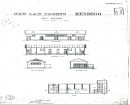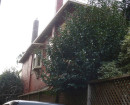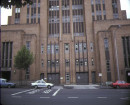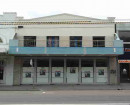FORMER HENRY FARREL'S HOTEL
MURCHISON STREET MIA MIA, GREATER BENDIGO CITY
-
Add to tour
You must log in to do that.
-
Share
-
Shortlist place
You must log in to do that.
- Download report
Statement of Significance
This record has minimal details. Please look to the right-hand-side bar for any further details about this record.
-
-
FORMER HENRY FARREL'S HOTEL - History
The following is an extract from Former Shires of Mcivor and Strath/ieldsaye Herhage Study - Stage 2. prepared by Context Pty Ltd 2009
History and Historical Context
History ofthe Shire of Strathfieldsaye
The land around the former Shires of Strathfieldsaye and Mcivor had a long history prior to the arrival of Europeans. The Jaara Jaara people are the original inhabitants of the area. The area around Port Phillip was explored by Sir Thomas Mitchell, the Surveyor General of New South Wales, and a large party in 1836, on the homeward leg of a journey to Portland Bay. Impressed by what he perceived as the bounty of the land, Mitchell 'named the area Australia Fefix.[ I]
The Port Phillip district was opened up for settlement soon thereafter, and much of the land in the Western districts of Victoria, including the former Shires of Mcivor and Strathfieldsaye, was subsequently dominated by a series of pastoral runs. Most of the area around the town ofAxedale and the numerous small towns in its vicinity was licensed to David Jennings as part of the Campaspe Plains run. The run covered an area of more than 144,900 acres and was populated with an estimated 12,000 sheep. A portion of Campaspe Plains was licensed to A. Jennings and George Playne in 1840 and the 67,000 acre station became known as Axedale. In the coming decade the holders of the license changed a number of t imes. By the time the leasehold over the land was cancelled in 1865, the run had greatly reduced in size.[2]
Following the cancellation of leasehold, land holdings were of a smaller scale and pastoralists were gradually overtaken by farmers. The discovery of gold at Bendigo and the surrounding areas changed the face of the district and brought about new patterns of settlement and expansion. William John Bulling claimed to be the first man to discover gold at Mcivor, and he was granted a £400 reward for the find. By 1853, over one hundred prospectors had assembled at Wild Duck Creek in the hopes of striking it rich. This number expanded the following year, and included some 2,000 Chinese immigrants.[3]
The Strathfieldsaye Road District was proclaimed in the Government Gazette on the 12th August 1861 , and encompassed within it the parishes ofAxedale, Strathfieldsaye, Eppalock, Mandurang, Sedgwick and Lye11.(4] The process of election of the board was punctuated by rivalries between Catholic and .Protestant faiths, a characteristic of the district which infiltrates much of its history. Strathfieldsaye met the criterion prescribed to become a Shire in 1863, a transition that was officially proclaimed on the 17th September of that year. [5] In 1864, Strathfieldsaye Shire was divided into three wards; Mandurang, Strathfieldsaye and Axedale.[6]
History of Mia Mia
Mia Mia was originally known as Miami and developed in conjunction with the settlement at Heathcote. The small postal township developed in conjunction with the land around it, that was gradually taken up for agricultural and pastoral pursuits. Mia Mia shared in some of the benefits of the gold rushes, and a number of mines were established in the vicinity of the town. The industry provided for the establishment of a number of hotels, which found the majority of their clientele in association with the mines. The town was laid out just prior to the first iand sales, which occurred in 1860.
History of Henry Farrel's Hotel, Heathcote - Redesdale Road, Mia Mia
The ruins of Henry Farrel's former hotel are located on part of Allotment II of Section 13 in the Township of Mia Mia (originally the Parish of Spring Plains), which was granted to James Egan on the 27th February 1872. Egan sold to Thomas Dwyer on the 25th March 1885. Dwyer is listed as a hotel keeper in the t itles records, and it is assumed that he built the hotel soon after acquiring the land. Dwyer died in 1916, and the hotel probably fell into disuse and disrepair after this time.[7]
[I] Randell, J. O. (1985). Mcivor: A History of the Shire and the Township of Heath cote, Shire of Mcivor, p. I.
[2] Spread borough, Robert and Anderson, Hugh (1983). Victorian Squatters, Red Rooster Press, Ascot Vale, p. 150
[3] Spreadborough & Axedale (1983), p. 31 .
[4] Hewat, Tim (1983), Bridge Over Troubled Waters, A History of the Shire of Strath/ieldsaye, Shire of Strathfieldsaye,
Victoria, pp. I I - 12.
[5] Hewat, Tim (1983), p. 18.
[6] Hewat, Tim (1983), p. 107.
FORMER HENRY FARREL'S HOTEL - Interpretation of Site
Certificates of title indicate that the hotel is likely to have been built around 1872, around the time that the land was granted to James Egan. The hotel is believed to have fallen into disuse around 1916 when the second hotel keeper Thomas Dwyer died.
FORMER HENRY FARREL'S HOTEL - Archaeological Significance
The site is of historical significance as an early hotel for the Mia Mia area.
Heritage Inventory Description
FORMER HENRY FARREL'S HOTEL - Heritage Inventory Description
This site comprises the remnants of a bluestone building .
-
-
-
-
-
OUTBUILDINGS AND COTTAGE
 Greater Bendigo City
Greater Bendigo City -
MIA MIA UNITING CHURCH
 Greater Bendigo City
Greater Bendigo City -
Manse
 Greater Bendigo City
Greater Bendigo City
-
-









